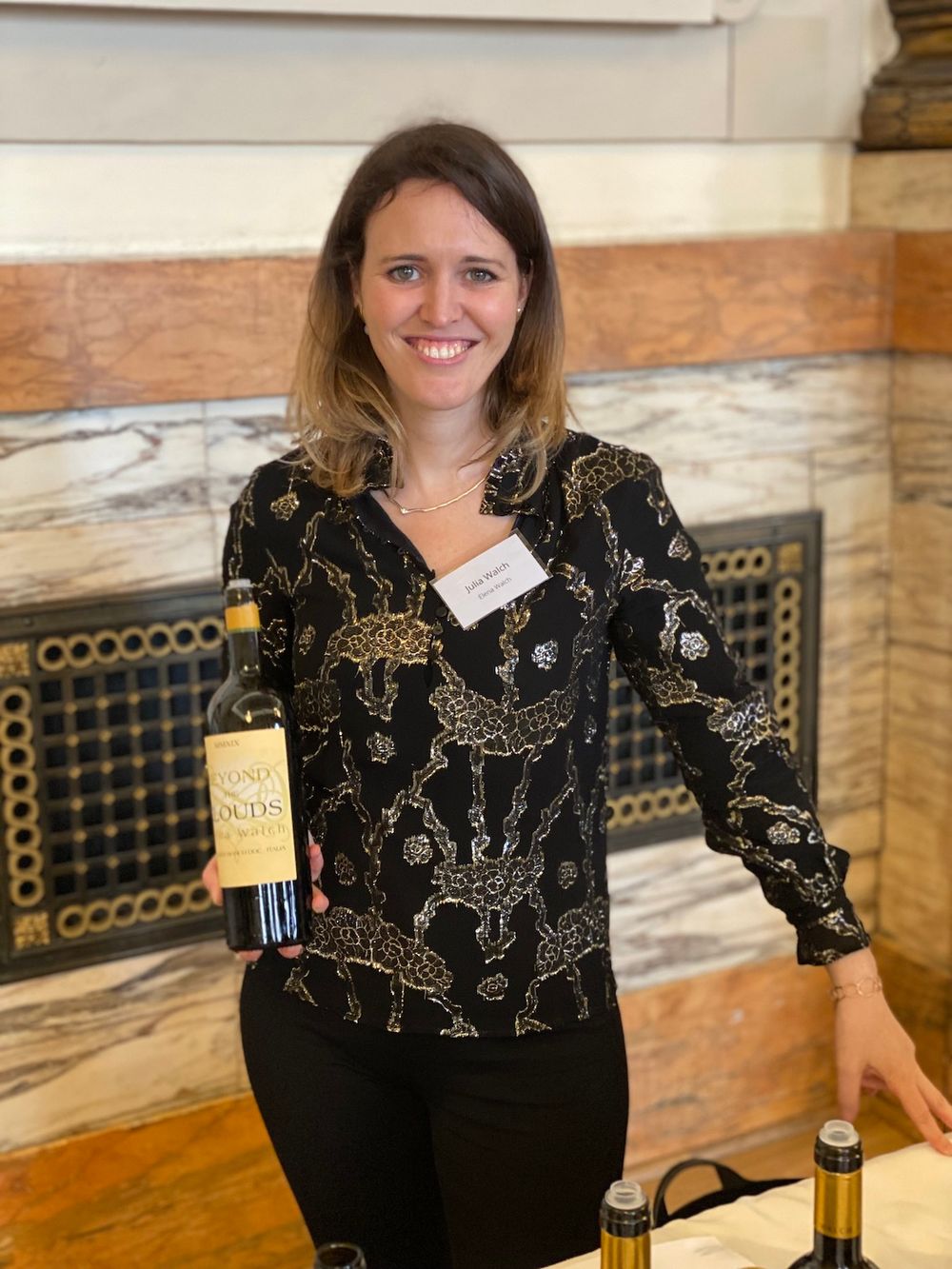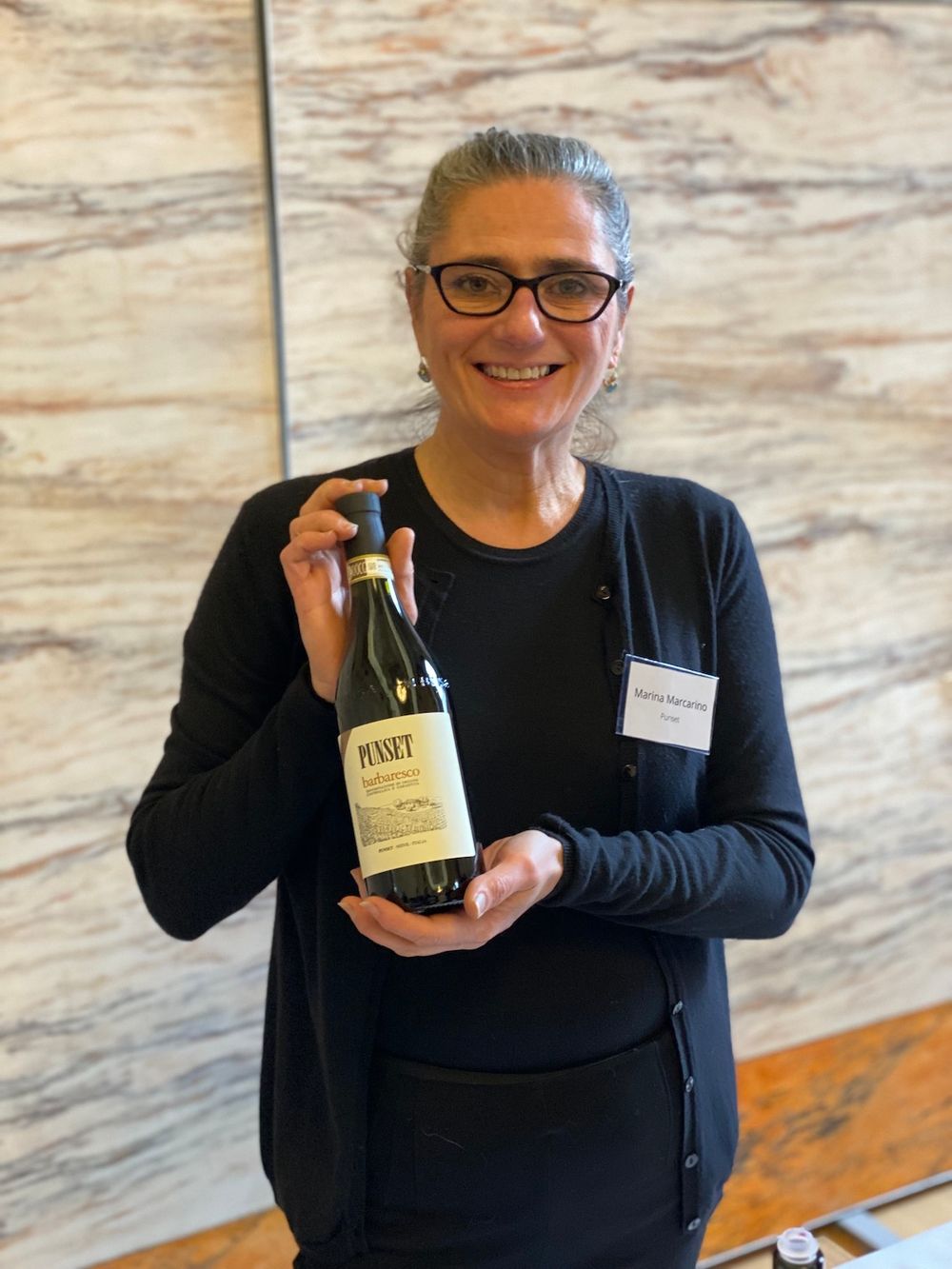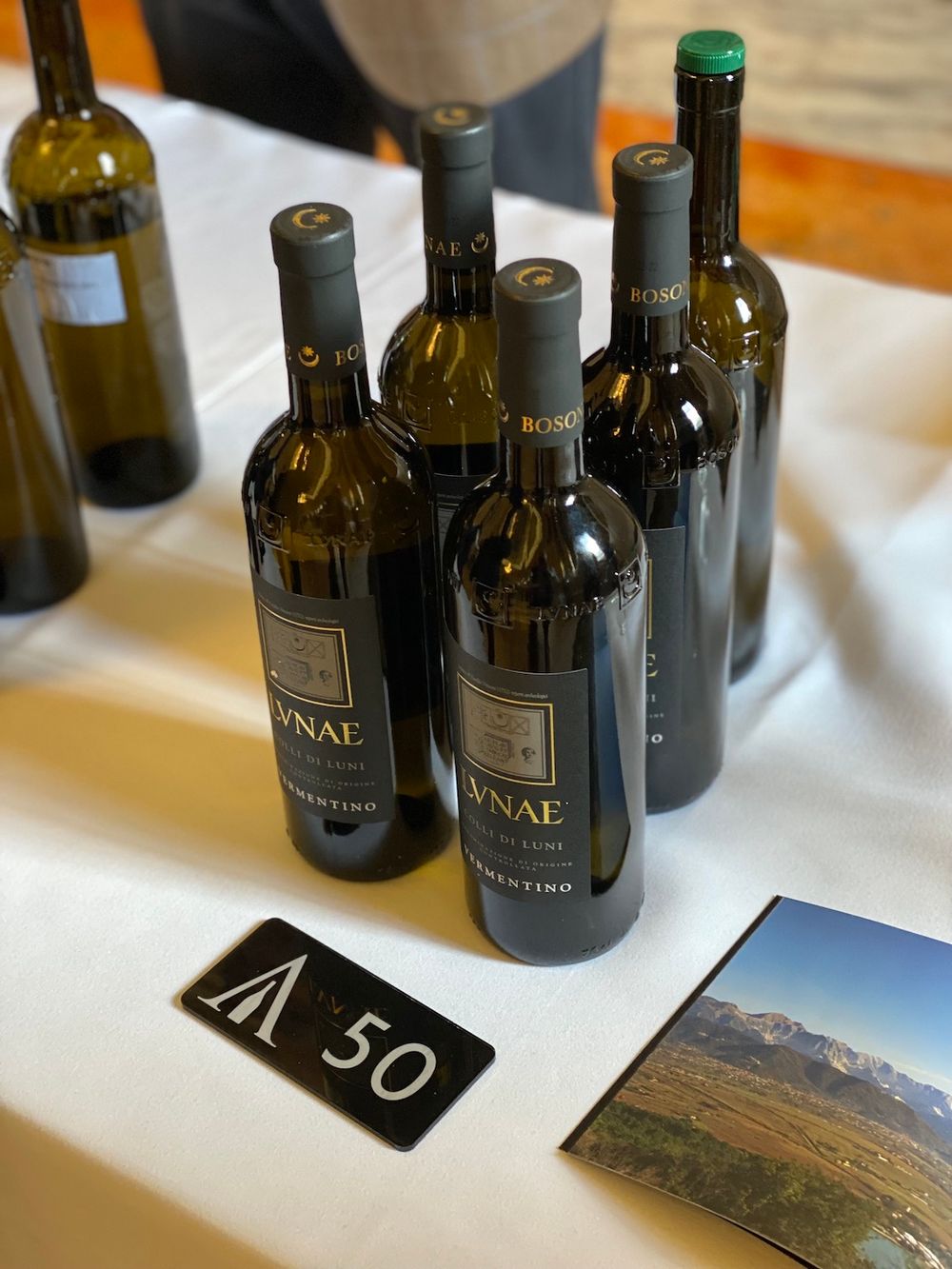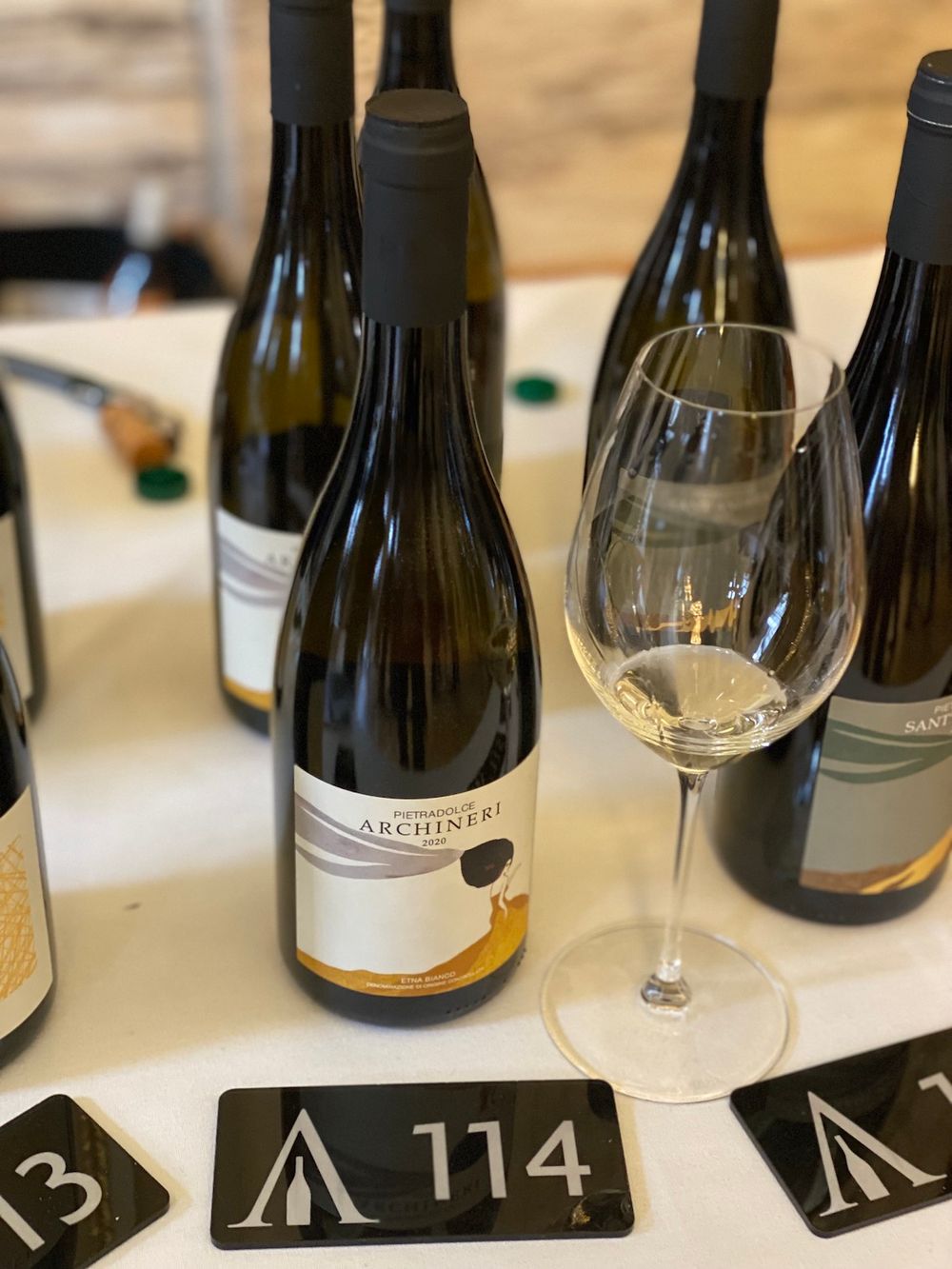“Though it is obviously tempting to single out the superb 2019 Sassicaia for which tasters made a beeline, it is arguably more efficacious to highlight the value offered by its little brother, Le Difese,” writes David Kermode.
Armit’s latest results are yet to be released, but if the smile on boss Brett Fleming’s face at its Italian tasting, not to mention the largesse with the library wines, are anything to go by his turnaround is comfortably on course.
Fleming arrived at Armit, the fifth managing director in ten years, in November 2019, bursting with ideas on how to transform a business with a golden portfolio of fine wines and a balance sheet containing rather a lot of red.
“We’re back, we’re stable, we’re focused and we are profitable,” he tells me, “so now it’s all about the ‘new Armit’, looking at areas of the portfolio where we could be stronger, with producers who demonstrate terroir excellence.”

Brett Fleming (l) at the Armit Italian tasting, March 9, 2022
Though the perfect storm of the coronavirus pandemic and Brexit have driven rivals to the brink, or beyond, Fleming has kept Armit’s team focused on growth, no doubt aided by the company’s strong private client business and network of specialist independent retailers that help to balance its on-trade presence.
“I wanted us to demonstrate the sheer excellence of the producers in the room so I asked myself the question ‘what’s different about your tasting?’ The answer was to pull out some sexy stock, to show off some library wines that are not for sale. It’s an investment.”

Some of the many library bottles on offer at the tasting
The back vintages included 2010 Sassicaia, 2013 Archineri Etna Rosso and a 2013 Bussia 90 di Barolo Riserva from Giacomo Fenocchio.
Italy is what Fleming describes as “Armit’s DNA” and alongside the long-standing names, new signings were also heralded, with the latest, Campania’s Viticoltori De Conciliis and Alto Adige producer Elena Walch. The latter partnership was announced on the eve of the event. “The ink is still wet on that one … we haven’t even got any stock yet,” he admitted.
Highlights from the new names

Julia Walch daughter of winemaker Elena Walch
A successful architect, Elena Walch married into one of the oldest winemaking families in the Alto Adige in the 1980s and her first vintage under her own name was in 1988, when she became the mountain region’s first female winemaker. She went on to win acclaim around the world, with daughters Julia and Karoline now working alongside her.
Elena Walch, ‘Castel Ringberg’, Alto Adige Pinot Grigio 2020 (RRP £27), from the glacial gravel and limestone of this beautiful vineyard, at 400 metres, close to Lake Caldaro with its moderating influence, comes this crystalline Pinot Grigio, which has 15 percent oak influence. Elegant, bursting with fresh citrus, the texture is waxy, the finish long and pure.
Elena Walch, ‘Beyond the Clouds’, Alto Adige 2020 (RRP £60), a Chardonnay-based blend, with the remaining 20 percent “a secret, so as not to be a distraction”, according to Elena’s daughter Julia, who was at the tasting table, this wine was described as ‘one of the iconic whites of northern Italy’ by Wine Advocate’s Monica Larner and will be sold by allocation. An ethereal nose of orange blossom, zesty lemon and apricot leads into a rich, textural feast that sits on a tightrope with fresh citrus acidity and a clean, mineral finish. Burgundy lovers should bag this before it’s gone.
Viticoltori De Conciliis was the other new face paraded at the tasting. From the rugged foothills of southern Campania, a family-owned winery, formed in 1996, when siblings Luigi, Bruno, and Paola convinced their father Alessandro to stop selling grapes and make their own wine instead, its 15 hectares of vineyards are farmed organically.
Viticoltori De Conciliis, Greco di Tufo, IGP Paestum, 2020 (RRP £19.50), aromatic, inviting and revitalising on the nose, with ripe greengage, passionfruit and a brush of jasmine, on the palate, the fruit is rich, plump and textured, all kept in check by a fine thread of citrus acidity and a scintillating volcanic minerality.
The other tasting highlights

Organics pioneer Marina Marcarino
Punset, Langhe Arneis 2020, Piedmont (RRP £17) from an organic pioneer, using such methods since 1982 and certified in 1991, now run by winemaker Marina Marcarino who talks passionately about her use of Japanese ‘Fukuoka farming’, with its emphasis on a biodynamic, balanced ecosystem. With 50 percent of the grapes macerated on skins for ten days, the nose offers enticing tropical citrus, wild honey and mountain herbs, the palate is intense, layered, harmoniously balanced with zesty orange acidity and a lingering finish.
Agricola Tiberio, Trebbiano d’Abruzzo 2021, Abruzzo (RRP £15), from ungrafted vines in underrated Abruzzo, the sandy soils rich in minerals, the Trebbiano Abruzzese grape provides succulent stone fruit – peach and greengage – balanced by rapier acidity and a lovely flinty character. Delicious and great value.

Cantine Lunae, Vermentino, Etichetta Nera, Colli di Luni DOC, Liguria (RRP £27), from the border of Liguria and Tuscany, the Mediterranean influence is evident in the refreshing salinity which runs through this fresh, aromatic, herbal, sumptuously textured wine, which benefits from 12 hours skin contact and lengthy lees ageing.
Pietradolce, Sant’ Andrea Etna Bianco 2017, Sicily (RRP £122), from Etna’s celebrated pre-Phylloxera vines, Carricante at its most sublime. Extended skin maceration, with up to ten months of skin contact, giving intensity and a lush texture, balanced by crisp citrus acidity. Powerful, elegant… absolutely stunning.

Pietradolce, Archineri, Etna Rosso 2017, Sicily (RRP £31), a pale scarlet, with perfumed aromas of cherry and raspberry, fine-grained tannins, a dot of sweetness and a fine line of tart cranberry acidity support an elegant structure and delicate, yet sustained finish. Pure class and, judging by the library wine, real ageing potential.
Tenuta San Guido, Le Difese 2019, Toscana (RRP £22), though it is obviously tempting to single out the superb 2019 Sassicaia for which tasters made a beeline, it is arguably more efficacious to highlight the value offered by its little brother, Le Difese, the only wine from Tenuta San Guido that uses Sangiovese, blended with Cabernet Sauvignon. Violets, fig leaf, blueberry and dried oregano lead into joyously juicy cherry berry fruit, ripe tannins and a fresh, relatively short mineral finish. A wonderful wine for impressing your friends without breaking the bank.
Giacomo Fenocchio, Bussia 90 di, Barolo Riserva DOCG (RRP £81), from winemaker Claudio Fenocchio, representing the 5th generation of the Fenocchio family, a lavish feast of bright red cherry, rosehip, fragolini di bosco and red liquorice, with soft leather, tobacco leaf and a smattering of christmas spice. Precise, tightly wound, elegant and ethereal.
































